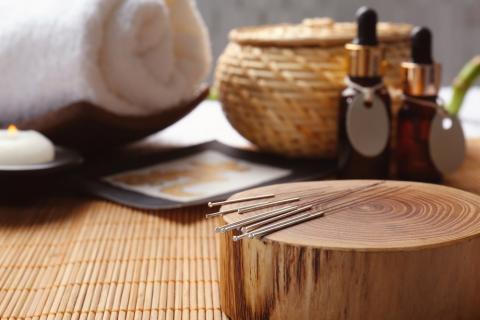
Acupuncture has become a popular holistic treatment to alleviate pain for several conditions, but dry needling isn’t as well known. While both acupuncture and dry needling use small, stainless steel needles to trigger points in the body, dry needling is commonly used as a way to trigger muscles.
What is dry needling?
Dry needling is often confused with acupuncture, but has its roots in trigger point therapy. In order to differentiate between various types of trigger point therapy, Dr. Janet Travell used the terms wet and dry needling—the latter of which has become a science-based therapy used to treat various conditions. Though sources vary, Czech physician Karel Levitt is known for popularizing the dry needling technique that aims to reduce myofascial trigger point pain.
Does dry needling work?
Dry needling is associated with reducing muscular pain and stiffness, and is typically used in conjunction with physical therapy in the United States or physiotherapy in Canada and other countries. In fact, the American Physical Therapy manual currently suggests that dry needling be used alongside manual soft tissue work, functional training, and other forms of physical therapy.
That said, dry needling offers several benefits of its own. A 2018 study published in PM&R found a sustained reduction in chronic myofascial pain 6 weeks after dry needling treatment. Additionally, a recently published review in The Journal of Pain Research concluded that trigger point therapy plays a role in reducing the excitability of the central nervous system—though the review did warn that sample sizes are still small. Lastly, a 2018 study published in PLOS ONE demonstrated that patients with plantar fasciitis experienced a decrease in pain after electrical dry needling in combination with manual therapy, exercise, and ultrasound.
Finding A Dry Needling Practitioner
Finding a dry needling practitioner will depend on which country you live in. If you live in the United States, it may also depend on which state you reside.
As of today, many states have allowed for physical therapists to practice Functional Dry Needling. States that do not currently allow for physical therapists to perform dry needling include California, Utah, New York, and Hawaii. This is, in part, due to a murky understanding between acupuncturists and physical therapists. Generally, acupuncturists do acupuncture while physical therapists do dry needling, though this can differ depending on the practice and reason for care.
Is Dry Needling Right For You?
The best way to know if dry needling is right for you and your body is to talk with a licensed practitioner you trust. Acupuncturists spend years studying the body’s systems, including the musculoskeletal system, while physical therapists don’t often come from a more holistic understanding (though this is not a rule and there are exceptions.) As such, visiting an acupuncturist might alleviate muscle pain while also addressing headaches or menstrual abnormalities.








